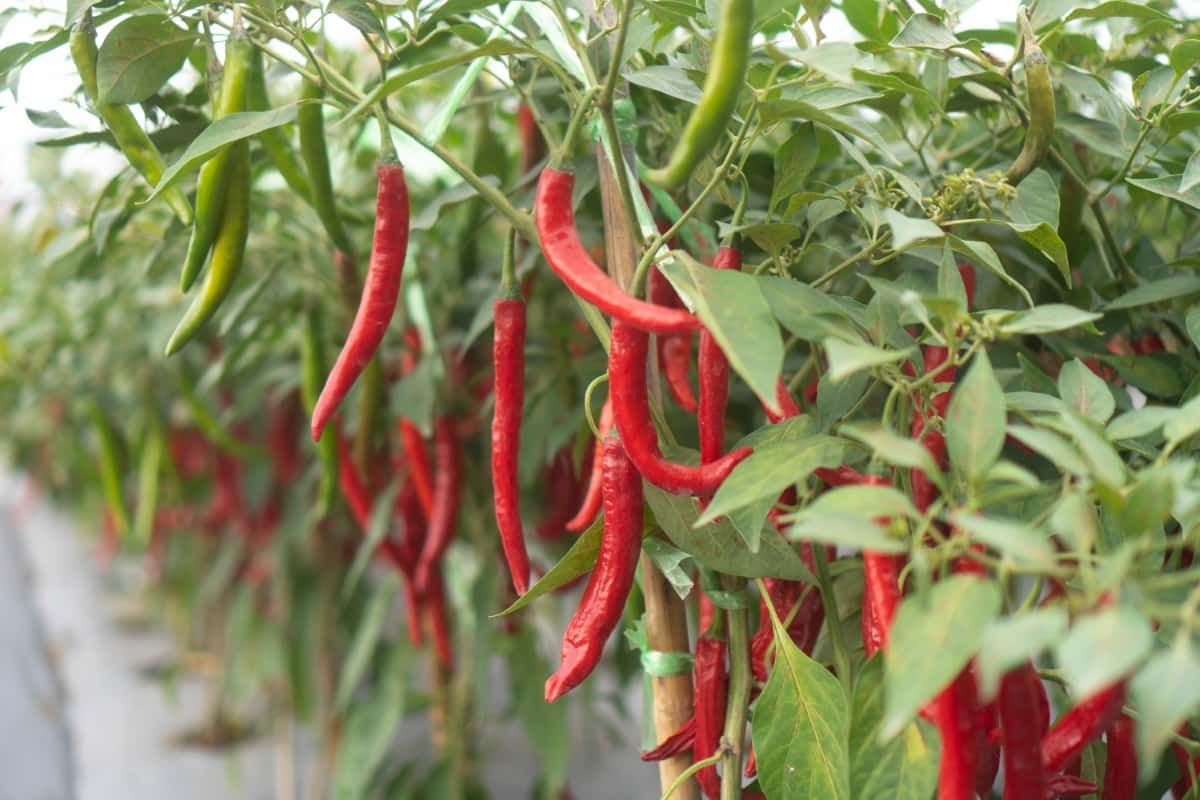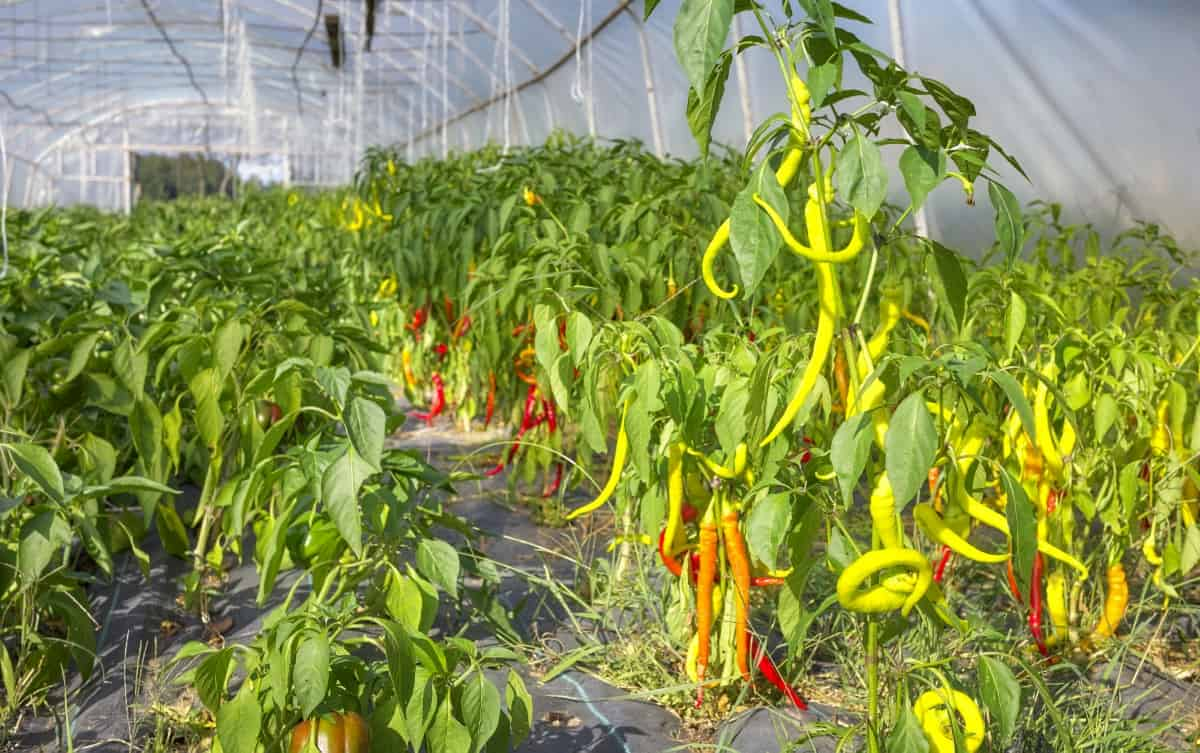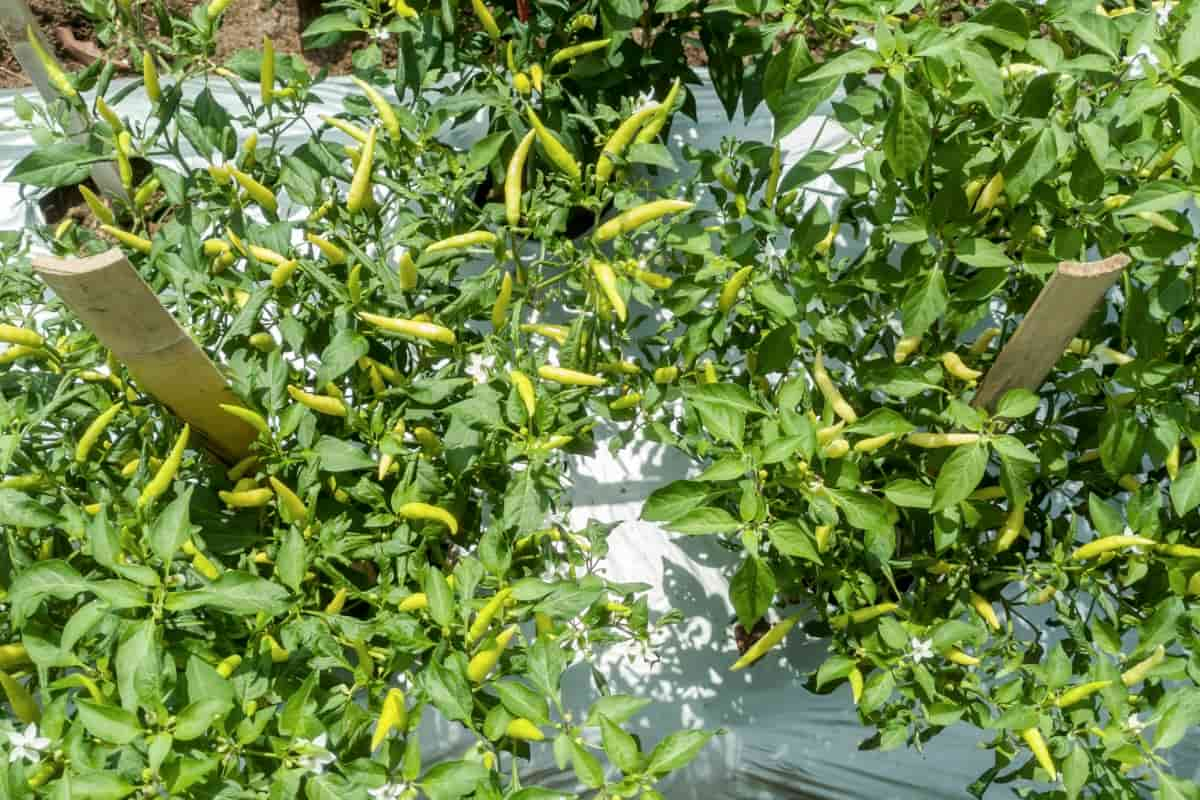Mulching in chili pepper farming is a transformative practice that significantly boosts plant health and productivity. It offers an array of benefits, from enhancing soil quality to increasing yields, which is crucial for farmers aiming for successful and sustainable cultivation.

Mulching in Chili Pepper
The Importance and Role of Mulching in Chili Pepper Farming
Mulching is a critical practice in chili pepper farming, significantly impacting how to grow chilli plants faster and how to increase chilli yield. This entails applying a protective layer of material around the plants to improve both soil quality and the overall health of the plants. This technique is a key part of a chilli farming guide, offering a natural solution to many agricultural challenges. By forming a protective soil cover, Mulching plays a crucial role in retaining soil moisture, managing weed growth, and enhancing soil fertility. These factors are essential for boosting pepper production and enhancing the overall well-being of chili plants.
Types of Mulch Suitable for Chili Pepper Farming
Selecting the right type of mulch is essential when considering how to increase flowering in chilli plants and pepper yield per plant. Organic mulches like straw, grass clippings, and leaves are great for chili pepper farming. They break down over time, adding nutrients back into the soil. Inorganic mulches like black plastic can also be used to warm the soil and control weeds. Each type of mulch has its advantages, and the choice depends on the farm’s specific needs, such as moisture retention or soil temperature regulation.
Benefits of Mulching in Chili Pepper Farming
Mulching offers numerous benefits, particularly in increasing chili yield and growing chilli plants faster. It helps maintain soil moisture, reducing the need for frequent watering. Mulch also regulates soil temperature, protecting roots from extreme temperatures. Additionally, it suppresses weed growth, which competes with chili plants for nutrients. Mulching even helps prevent soil erosion and nutrient runoff, making it a sustainable practice for chili farming. For farmers looking into increasing flowering in chilli plants, mulch can create a more favorable microenvironment for blossom development.
How to Choose the Right Mulching Material for Chili Pepper Farming
Choosing the right mulching material is key in chili pepper farming. Farmers should consider factors like local climate, soil type, and the specific needs of their chili plants. Organic mulches are generally preferred for their soil-enhancing properties. For regions with cooler climates, black plastic can be advantageous for soil warming. Farmers should also consider the availability and cost of the mulch materials in their area. Making the right mulch choice can significantly increase pepper yield and overall farm productivity.
In case you missed it: Hydroponic Chilli Pepper Farming in a Greenhouse: Key Rules to Start from Scratch

Best Mulching Techniques for Chili Pepper Farming
Applying mulch correctly is as important as choosing the right type. The best mulching techniques for chili pepper farming involve spreading a uniform layer of mulch around the plants, ensuring not to pile it against the stems to avoid rot. The thickness of the mulch layer should be sufficient to suppress weeds and conserve moisture but not so thick that it impedes air circulation.
Mulch should be reapplied as necessary, especially when using organic materials that decompose over time. Proper mulching is a crucial element in any chilli farming guide, influencing how to increase chilli yield and crop health.
How Mulching Helps Control Weeds in Chili Pepper Farms
Mulching effectively controls weeds in chili pepper farms, a key aspect of increasing pepper yield. Weeds compete with chili plants for nutrients, water, and light, hindering growth and reducing yields. Mulch inhibits the germination of weed seeds by shielding the soil from sunlight. This not only helps in how to grow chilli plants faster but also reduces the labor and costs associated with weed control. Effective weed management through mulching contributes to healthier chili plants and higher yields.
How Mulching Helps in Effective Utilization of Fertilizers
Mulching plays a significant role in effectively utilizing fertilizers in chili pepper farming. It helps maintain soil structure and moisture, which are crucial for efficiently absorbing nutrients from fertilizers. The chilli fertilizer schedule can be optimized with mulching, as it reduces nutrient runoff and ensures that the plants use fertilizers more effectively. This contributes to how to increase chilli yield and promotes sustainable farming practices by reducing the need for excessive fertilizer application.
In case you missed it: How to Prevent Aflatoxins in Chilli Farming

Using Mulch to Conserve Soil Moisture in Chili Pepper Farms
Conserving soil moisture is vital in chili pepper farming, especially in areas with limited water resources. Mulch serves as a protective layer between the soil and the air, minimizing evaporation and preserving stable soil moisture. This is particularly important for increasing flowering in chilli plants, as adequate moisture is crucial during the flowering and fruiting stages.
By using mulch to conserve soil moisture, farmers can ensure their chili plants receive the necessary water to grow healthily and yield more peppers. This practice enhances how to increase pepper yield and contributes to water conservation in agriculture.
How Mulching Helps Temperature Regulation in Chili Pepper Farms
Mulching is crucial in regulating soil temperature, a key factor in growing chili plants faster and increasing flowering in chili plants. It is an insulator, maintaining soil warmth in colder seasons and cooling it during hot periods. This stable environment is essential for healthy root development and overall plant growth, directly impacting the chili pepper yield.
How to Prevent Soil Erosion with Mulching in Chili Pepper Farms
Soil erosion is a major challenge in agriculture, but mulching effectively combats this issue in chili pepper farms. By covering the soil, mulch prevents the direct impact of raindrops and wind, which can displace topsoil. This preserves the soil structure and fertility, essential for increasing pepper yield per plant, and protects water quality by preventing sediment runoff.
Getting More Yields with Mulching in Chili Pepper Farming
Incorporating mulching into chili pepper farming is a proven strategy for getting more yields. It directly influences soil moisture conservation, weed control, nutrient uptake, and temperature regulation, all vital for robust plant growth and high yields. As part of a comprehensive chilli farming guide, Mulching is an effective tool for maximizing productivity and ensuring sustainable farming practices.
In case you missed it: Best and Latest Pesticide for Chilli Plants to Control Insect Pests For Better Profits

Conclusion
Mulching is an indispensable practice in chili pepper farming, offering multifaceted benefits that lead to healthier plants and increased yields. By improving soil quality, conserving moisture, regulating temperature, and protecting against erosion and weeds, mulching is a key contributor to the success and sustainability of chili pepper farms.
- Feed Your Flock for Less: Top 10 Tips to Save on Chicken Feed
- Ultimate Guide to Ossabaw Island Hog: Breeding, Raising, Diet, and Care
- Hatching Answers: The Top 10 Reasons Your Chickens Aren’t Laying Eggs
- Eggs and Economics: Breaking Down the Cost of Raising Backyard Chickens
- Defend Your Greens: Proven Methods to Keep Iguanas Out of Your Garden
- Ultimate Guide to Cinnamon Queen Chicken: A Comprehensive Guide for Beginners
- Ultimate Guide to California Tan Chicken: Breeding, Raising, Diet, Egg-Production and Care
- Ultimate Guide to Marsh Daisy Chicken: Breeding, Raising, Diet, and Care
- 10 Types of Chicken Farming Businesses You Can Start for Profits